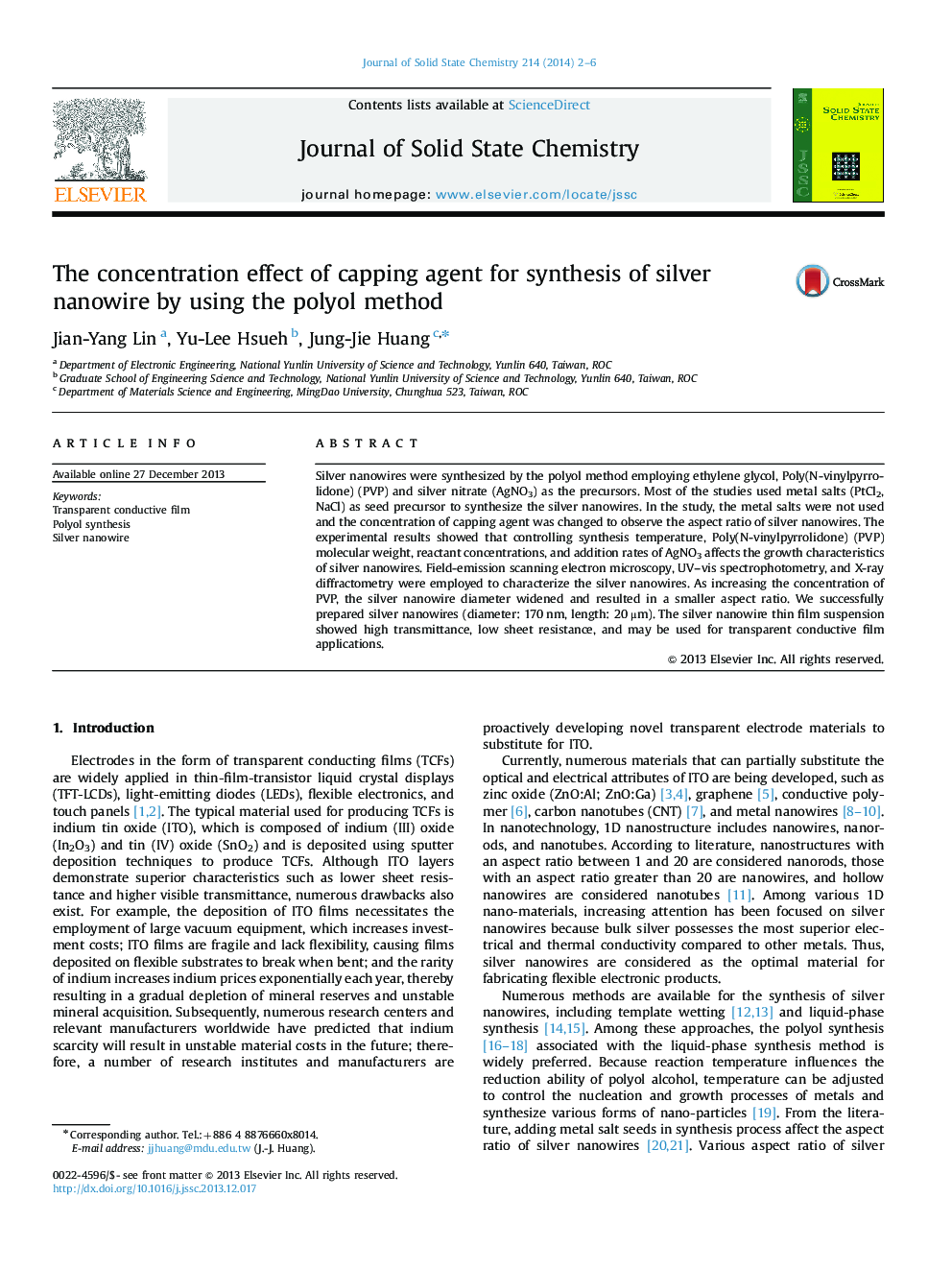| Article ID | Journal | Published Year | Pages | File Type |
|---|---|---|---|---|
| 1329773 | Journal of Solid State Chemistry | 2014 | 5 Pages |
•The polyol method was used to synthesize of silver nanowire.•The metal seed precursors were not used before synthesizing the silver nanowires.•The silver nanowire diameter and length was 170 nm and 20 μm, respectively.•Silver nanowire film with high transmittance (>85%) and low sheet resistance (<110 Ω/sq).
Silver nanowires were synthesized by the polyol method employing ethylene glycol, Poly(N-vinylpyrrolidone) (PVP) and silver nitrate (AgNO3) as the precursors. Most of the studies used metal salts (PtCl2, NaCl) as seed precursor to synthesize the silver nanowires. In the study, the metal salts were not used and the concentration of capping agent was changed to observe the aspect ratio of silver nanowires. The experimental results showed that controlling synthesis temperature, Poly(N-vinylpyrrolidone) (PVP) molecular weight, reactant concentrations, and addition rates of AgNO3 affects the growth characteristics of silver nanowires. Field-emission scanning electron microscopy, UV–vis spectrophotometry, and X-ray diffractometry were employed to characterize the silver nanowires. As increasing the concentration of PVP, the silver nanowire diameter widened and resulted in a smaller aspect ratio. We successfully prepared silver nanowires (diameter: 170 nm, length: 20 μm). The silver nanowire thin film suspension showed high transmittance, low sheet resistance, and may be used for transparent conductive film applications.
Graphical abstractThe FE-SEM image shows that nanostructures with considerable quantities of silver nanowires can also be produced when the PVP (Mw=360 K)/AgNO3 molar ratio was 2.5.Figure optionsDownload full-size imageDownload as PowerPoint slide
